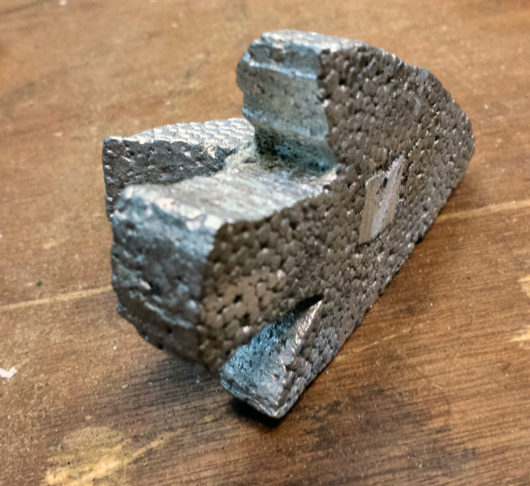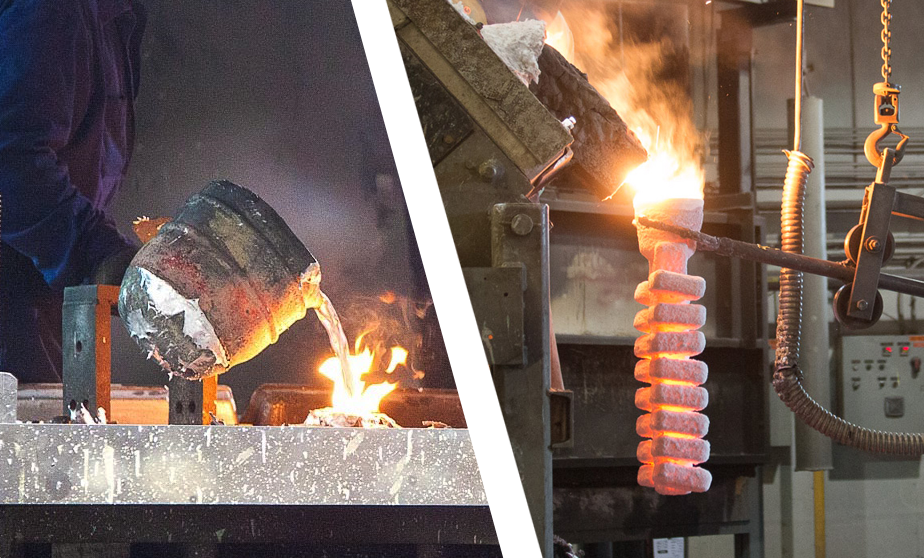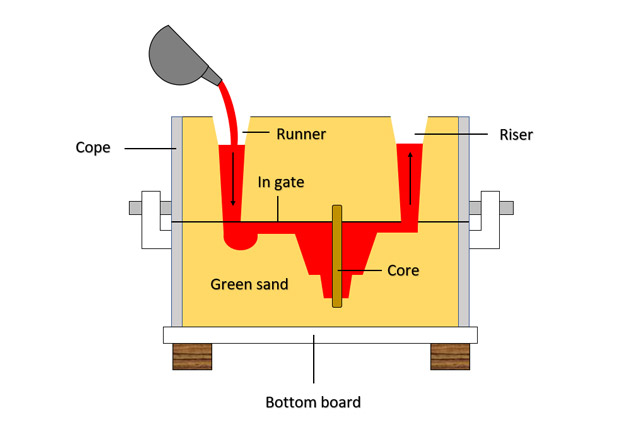What Does Stahl Specialty Company Mean?
What Does Stahl Specialty Company Mean?
Blog Article
The 8-Minute Rule for Stahl Specialty Company
Table of ContentsNot known Details About Stahl Specialty Company A Biased View of Stahl Specialty CompanyWhat Does Stahl Specialty Company Do?Everything about Stahl Specialty CompanyAll about Stahl Specialty CompanyIndicators on Stahl Specialty Company You Need To Know

If you're making a metal product, you've likely taken into consideration utilizing light weight aluminum as the base product. It has a high strength-to-weight ratio, excellent deterioration resistance, excellent formability, and visual charm. These aspects have brought about its boosted appeal recently. Pure aluminum has limited applications, so it is frequently combined with other elements, such as silicon, magnesium, and manganese to develop alloys.
(AA), based in North America, has created specs that manage aluminum alloys' composition, residential properties, and classification. There are two kinds of light weight aluminum alloys wrought and cast.
Stahl Specialty Company - The Facts
Cast aluminum alloys are made by melting pure light weight aluminum and combining it with various other steels while in liquid type. The mix is put into a sand, pass away, or financial investment mold. After solidification, the steel is eliminated from its mold and mildew. At this stage, it is in either its last form or as a billet or ingot for further processing.

The fourth number, which comes after the decimal point, specifies if the alloy is a casting (xxx. Wrought light weight aluminum alloys likewise begin by integrating molten light weight aluminum with other metals. In contrast to cast alloys, nonetheless, they are created right into their last shape via procedures such as extrusion, rolling, and bending after the metal has actually strengthened into billets or ingots.
There are lots of minor differences in between wrought and cast aluminum alloys, such as that cast alloys can have a lot more considerable amounts of other metals than wrought alloys. The most remarkable distinction in between these alloys is the construction procedure through which they will certainly go to supply the final item. Apart from some surface treatments, cast alloys will leave their mold in practically the precise solid form desired, whereas wrought alloys will certainly go through a number of modifications while in their strong state.
If you believe that a wrought alloy may be the very best for your job, have a look at some of our write-ups that explain more concerning certain wrought alloys, such as Alloy 6061 and Alloy 6063. On the various other hand, if you believe an actors alloy would be better for you, you can find out more concerning some cast alloys in our Alloy 380 and Alloy 383 short articles (coming quickly).
The Of Stahl Specialty Company
When picking a light weight aluminum foundry for your production demands, it's essential to examine a number of factors. One of one of the most crucial facets to take into consideration is the experience and capability of the foundry. aluminum metal casting. Choosing a shop that has the best knowledge of the aluminum spreading process, and the profile to reveal for it, helps to have an effective result for your project
Having the experience and industry understanding to craft your castings for optimum production and quality end results will streamline the project. Producing aluminum castings needs a facility collection of procedures to achieve the best results. When selecting a brand-new light weight aluminum foundry to partner with, ensure they have considerable sector experience and are knowledgeable regarding all facets of the light weight aluminum casting procedure: layout, manufacturing, material evaluation, and item testing.
The shop ought to additionally have a tried and tested record of delivering outstanding products that satisfy or surpass customer expectations. Quality control ought to likewise be at the top of your checklist when selecting a light weight aluminum foundry. By collaborating with a certified factory that adheres to the standards for quality assurance, you can safeguard the stability of your product and guarantee it satisfies your specs.
By picking a company that uses services that satisfy or surpass your product needs, you can be certain that your project will be completed with miraculous precision and effectiveness. Specific light weight aluminum factories concentrate on specific types of producing procedures or casting techniques. Different components need various manufacturing strategies to cast light weight aluminum, such as sand casting or die spreading.
The Definitive Guide for Stahl Specialty Company
Die spreading is the name provided to the process of producing intricate metal elements via use molds of the element, likewise called dies. The process utilizes non-ferrous steels which do not contain iron, such as aluminum, zinc and magnesium, because of the preferable residential properties of the steels such as reduced weight, higher conductivity, non-magnetic conductivity and resistance to corrosion.
Die casting manufacturing is quick, making high manufacturing degrees of parts very easy. It produces more components than any other process, with a high degree of precision and repeatability. For more information concerning die spreading and pass away spreading products utilized while doing so, kept reading. There are 3 sub-processes that drop under the category of die casting: gravity die casting (or long-term mold casting), low-pressure die casting and high-pressure die casting.
No matter of the sub-process, the die casting procedure can be damaged down into six steps. After the pureness of the alloy is checked, dies are created. To prepare the craves casting, it is very important that the passes away are tidy, to make sure that no residue from previous manufacturings stay. After cleaning, the ejection lubrication is related to the die to make sure a smooth release.
Some Known Details About Stahl Specialty Company
The pure metal, also called ingot, is contributed to the heater and maintained the molten temperature level of the steel, which is then transferred to the shot chamber and infused right into the die. The stress is after that maintained as the metal solidifies. As soon as the metal strengthens, the cooling procedure starts.
(https://www.pinterest.com/pin/1108589264525265586)
The thicker the wall of the part, the longer the cooling time as a result of the quantity of interior steel that additionally needs to cool down. After the part is completely cooled down, the die cuts in half open and an ejection system pushes the element out. Adhering to the ejection, the die is shut for the following injection cycle.
The flash is the added product that is cast throughout the process. Deburring gets rid of the smaller items, called burrs, after the cutting procedure.
The Stahl Specialty Company PDFs

Zinc is one of the most secondhand alloys for die casting due to its reduced price of raw products. Its rust resistance likewise allows the parts to be lengthy long-term, and it is one of the much more castable alloys due to its lower melting factor.
As stated, this alloy is among the most generally utilized, yet produces will, at times, select aluminum over zinc because of light weight aluminum's production advantages. Aluminum is very cost-effective and one of the a lot more flexible alloys. Aluminum is used for a number of different items and industries anything from home window structures to aerospace products.
Report this page